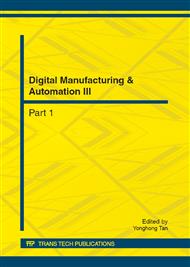p.395
p.401
p.405
p.409
p.415
p.419
p.423
p.427
p.431
A Physical Model for Self-Emitting Magnetic Signals during Fatigue Crack Propagation
Abstract:
It has previously been reported that when a fatigue crack grows in ferromagnetic materials, abnormal magnetic signals are spontaneously emitted, which can provide a powerful tool for fatigue crack life prediction. However, there is no physical model yet available to explain the mechanism for the formation of these self-emitting magnetic signals. In the present research, tension-tension fatigue tests of center-cracked sheet specimens were performed. The variations in the normal component of the self-emitting magnetic signals, Hp(y), on the surfaces of the specimens were measured during the fatigue test. The differences in peak-to-peak value, Hp(y), before and after failure of a specimen, were characterized. Consequently, a physical model based on magnetic charge was proposed, which was in good agreement with the experimental results. The model is helpful for understanding the inherent mechanism of the self-emitting magnetic signals.
Info:
Periodical:
Pages:
415-418
Citation:
Online since:
July 2012
Authors:
Price:
Сopyright:
© 2012 Trans Tech Publications Ltd. All Rights Reserved
Share:
Citation:


